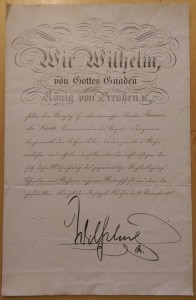 On Monday the 11th of November, 1907 Kaiser Wilhelm II the German Emperor and King of Prussia arrived in Portsmouth aboard his imperial yacht, the SMY Hohenzollern, for a week-long visit to Britain. The Emperor was met by a welcoming partly consisting of the Prince of Wales, Lord Roberts, the German ambassador, and one Colonel Henry de Beauvoir De Lisle. The group headed directly to Windsor from the coastal city to be hosted by King Edward VII, Wilhelm’s Uncle and the eldest son of the late Queen Victoria.
On Monday the 11th of November, 1907 Kaiser Wilhelm II the German Emperor and King of Prussia arrived in Portsmouth aboard his imperial yacht, the SMY Hohenzollern, for a week-long visit to Britain. The Emperor was met by a welcoming partly consisting of the Prince of Wales, Lord Roberts, the German ambassador, and one Colonel Henry de Beauvoir De Lisle. The group headed directly to Windsor from the coastal city to be hosted by King Edward VII, Wilhelm’s Uncle and the eldest son of the late Queen Victoria.
De Lisle, who would later achieved the rank of General, had been invited to welcome the Kaiser and travel to Windsor due to his connection to the Prince and Princess of Wales and Mr Connaught, but described himself in a letter to his mother as, “the least important of anyone in the castle.”
Despite this, De Lisle’s collection of papers relating to the state visit provide an interesting insight into the visit and a personal story about how he was decorated by the Kaiser.
After arriving at Windsor De Lisle was greeted by the King who joked he did not recognise him as hitherto he had only seen De Lisle at formal occasions in his military uniform. What he did recognise though was that De Lisle was not wearing a German decoration for this occasion and asked him why that was the case, to which De Lisle replied that he did not have one.
On hearing this Edward VII said “I will tell the Emperor he must decorate you,” and De Lisle woke up the very next day to find he had been awarded the foreign honour of the Order of the Red Eagle by the Kaiser.
Above you will see the hand signed Order for De Lisle by the German Emperor, 16 November, 1907. De Lisle was given private permission by his Majesty to wear the Insignia of the Red Eagle at events with the presence of German Emperor or members of the royal family of Prussia.
By Adam Cox – Archives Assistant